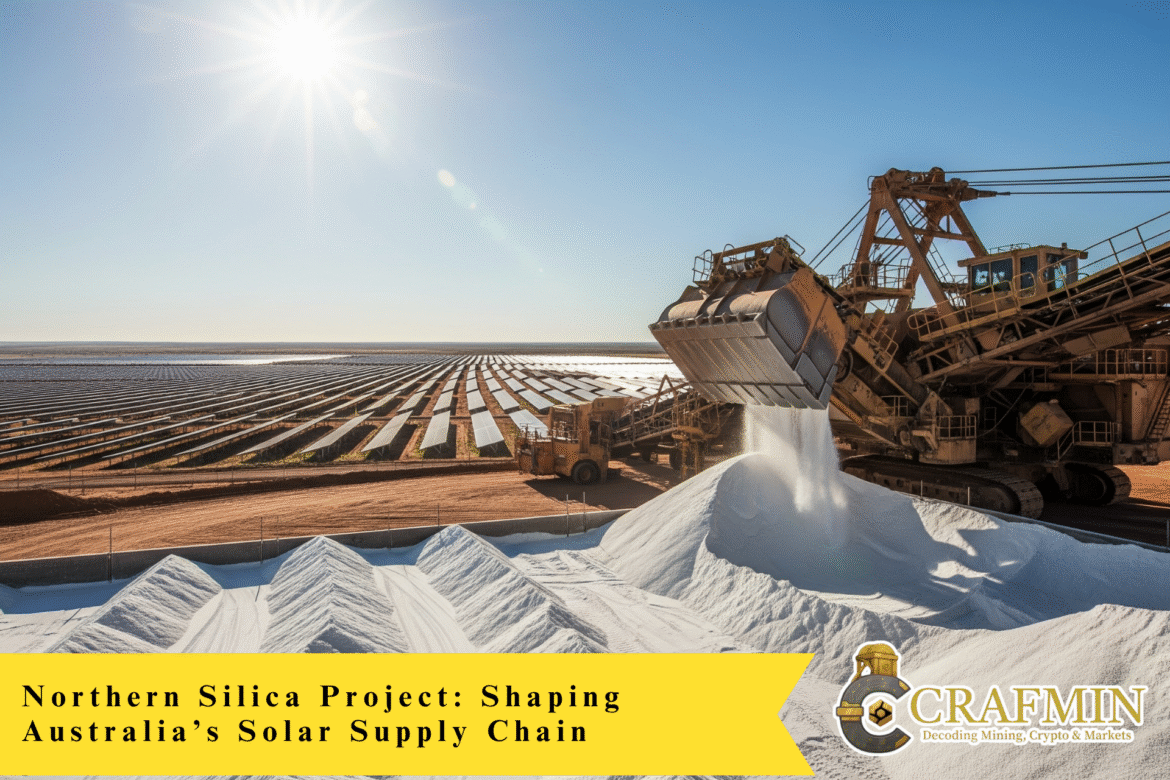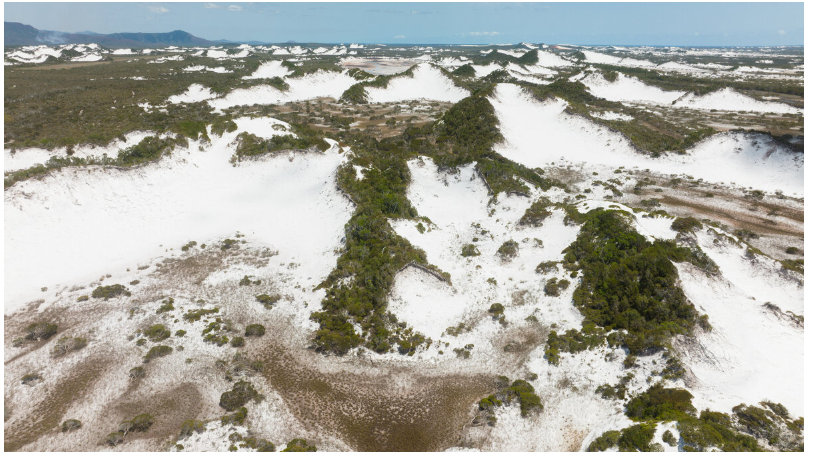A Landmark Resource in Queensland’s Cape Flattery

Aerial view of Cape Flattery’s silica dunes near Diatreme Resources’ exploration zone. Source: Diatreme Resources Limited
In Far North Queensland, Diatreme Resources is quickly redefining what silica sand can mean for Australia’s future. Their Northern Silica Project (NSP), located just 35 km north of Hope Vale and adjacent to the existing Mitsubishi-run Cape Flattery Silica Mines, is gaining attention across the mining and renewable energy sectors. The NSP is being driven by the Si2 deposit—a remarkable geological asset with the purity and scale to supply high-grade feedstock for the fast-expanding solar glass industry.
Why Si2 Matters: Purity, Volume, and Solar Compatibility
The Si2 deposit is already drawing global interest. With a silica content exceeding 99% and iron impurities under 120 ppm, this material meets the rigorous standards required for photovoltaic applications. In April 2024, Diatreme confirmed a 17% uplift in its indicated resource, raising it to 120.5 million tonnes and revealing an additional 49.5 million tonnes in measured resources. Combined with its other holdings, the company now controls more than 402 million tonnes of high-purity silica—one of the largest consolidated resources of its kind in the Southern Hemisphere.
A 2024 drilling campaign further strengthened these numbers, returning consistent 20-meter intercepts of premium-grade material across 154 holes. This has directly informed the pre-feasibility study scheduled for mid-2024, marking a key milestone on the road to commercial production.
A Major Project with Fast-Tracked Support
Diatreme’s Northern Silica Project was officially granted Major Project Status by Queensland’s Coordinator-General in early 2024. This designation, made under the State Development and Public Works Organisation Act, fast-tracks approvals and clears a path for joint federal-state environmental assessments. It also positions the NSP among a select group of nationally significant mining developments, further endorsed by its alignment with Australia’s clean energy goals.
The operation is expected to begin with an output of 3 million tonnes per annum (Mtpa), scaling up to 5 Mtpa by the second year. With a mine life projected to exceed 25 years, the project is already drawing serious interest from international offtakers, particularly within the photovoltaic manufacturing sector.
Funding, Partnerships, and Infrastructure Development
The Cape Silica Joint Venture with European industrial minerals giant Sibelco has added both capital and expertise to the development. Sibelco has committed a total of AUD 49 million—comprising AUD 35 million through the JV and AUD 14 million in equity funding—giving it a 26.8% stake in the project. Its global network in industrial glass markets provides Diatreme with significant leverage for future export contracts.
In terms of logistics, Diatreme has committed to avoiding dredging in the Great Barrier Reef World Heritage Area. Instead, the company plans to use barged transshipment systems out of Cape Flattery, supported by a tripartite access deed signed with Ports North and Cape Flattery Silica Mines. On-site facilities will include open-cut mining pits, processing plants, a dewatering station, stockpile zones, a slurry pipeline, and port-connected conveyors.
Also Read: Samson Mow Pushes for European Bitcoin Adoption Following Invitation from French Politician
Environmental Commitments and Cultural Partnerships
Water will be sustainably sourced from a licensed groundwater bore capable of supplying up to 3,500 ML annually. Diatreme is also investigating hybrid power solutions, including solar and wind, for future operations. Comprehensive environmental assessments are already underway under the federal EPBC Act, ensuring that all aspects of the project meet strict compliance standards.
In May 2024, Diatreme signed a Cultural Heritage Management Agreement with the Walmbaar Aboriginal Corporation, representing the Dingaal Clan. This agreement lays the foundation for long-term cooperation, job creation, training pathways, and cultural stewardship—integral to the project’s success and community acceptance.
Northern Silica Project at a Glance
| Project Element | Specification / Status |
| Silica Grade | >99% SiO₂; <120 ppm Fe – ideal for solar glass and electronics |
| Measured Resource | 49.5 million tonnes |
| Indicated Resource | 120.5 million tonnes |
| Total High-Grade Base | Over 402 million tonnes (across NSP and adjacent leases) |
| Projected Output | 3 Mtpa ramping to 5 Mtpa by Year 2 |
| Mine Life Estimate | 25+ years |
| Initial CapEx | Approx. AUD 1 billion |
| Construction Jobs | Estimated 120 |
| Operational Workforce | ~90 long-term positions |
| Partner Stakeholders | Sibelco (26.8% equity and JV partner) |
| Environmental Status | EPBC Act referral accepted; EIS underway |
| Cultural Agreements | CHMA signed with Walmbaar Aboriginal Corporation |
Conclusion: Australia’s Critical Mineral Future Runs Through Cape Flattery
What began as a promising silica exploration zone has quickly evolved into one of Australia’s most strategically aligned mineral projects. Diatreme Resources’ Northern Silica Project is now firmly positioned at the intersection of resource development, clean energy transition, and sustainable regional growth. With Major Project Status in hand, substantial investor backing, and a geological resource that rivals global leaders, the NSP offers more than just commercial promise—it offers a blueprint for responsible, forward-looking mining in Australia.
From the silica-rich dunes of Cape Flattery, Diatreme is preparing to feed the solar supply chains of the future. As the global demand for high-purity silica intensifies, the company’s vision for a smarter, greener, and more sustainable mining model is not only timely—it may soon become essential.


